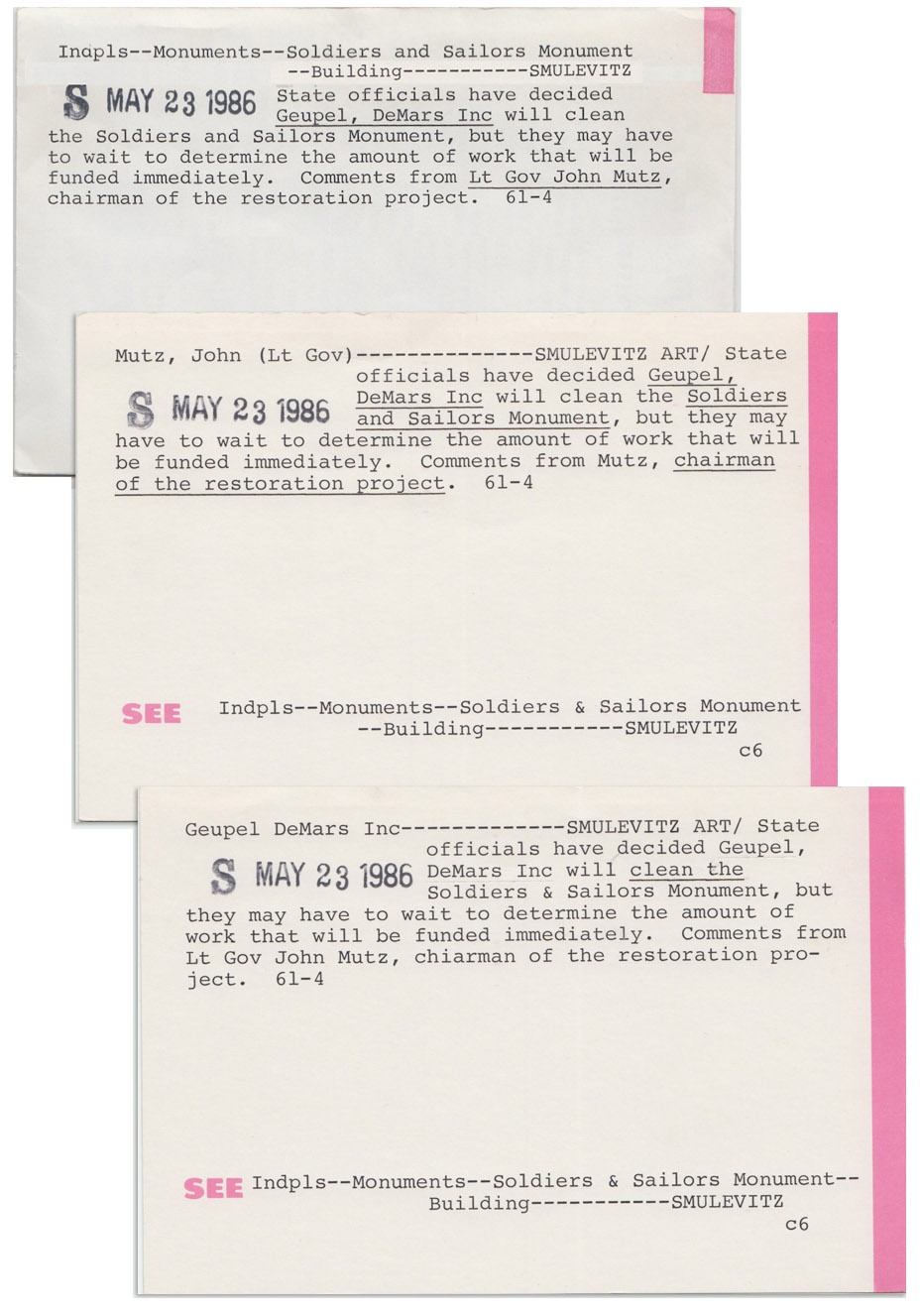Indianapolis Star & News Library, Part 1
I stared at the Star/News Library in December 1986, and I remember that because the cards and envelopes we used for archiving clippings were color-coded to make them easy to spot in the drawers (1986 was blue and 1987 green).

This was an old-style, pre-digital filing system and it was a wonder to behold. The system dated back to 1916 and had been refined and improved over the decades. The cards and envelopes were about 4x6 and got filed by name and topic in several rows of metal filing cabinets.
The Library staff was about 20-25 people, most of them women. There was a Head Librarian and two supervisors to cover the morning and evening shifts. Two or three librarians worked in the photo area, one was exclusively dedicated to taking phone calls from the public and the rest of us worked on the archiving process while also answering phone calls from the newsrooms.
The Star was a morning paper and The News came out in the afternoon so twice a day one of the supervisors would cut all the articles out of the paper (attaching the jumps) and would then mark each of them up with a red pencil. The main name or topic would be circled to indicate that this would go on the envelope in which the clipping itself would be enclosed. Other key names and topics would be underlined or hand-written in the margins and these were for the cross-reference cards.
The topic headings were quite specific and had a hierarchy. For example: "Public Schools--Indpls--Teachers--Salaries" or "Indpls--Monuments--Soldiers and Sailors Monument--Building."
The main task was to read the article and the write an abstract of it that could be typed on the cards and envelopes. The fundamental abstract would be the same, but for each cross-reference card it was important to add a line or two on the relevance that specific person or topic. Even folding up a large clipping to fit in such a small envelope was a skill to be learned.
I liked abstracting well enough, but was not very fast at it -- until I realized that our newest typewriter had a memory and could repeatedly type out the same block of text. I was better at the reference side of the job and over a couple of years my job evolved so that I was the "chief" reference librarian.
This was just a few years before the modern Internet (defined as WWW) and the only sources we had to answer reference questions were a few hundred books we had on the shelves and our own clipping files. A few times a day we called one of the subject desks at the public library.
Although this was mostly a pre-digital world, we did have some pretty powerful online tools at our disposal. The newsrooms worked on dumb terminals of an ATEX mainframe, but we in the Library had one of the only PCs in the building. We used it to dial in via modem to one of several databases of published newspapers, magazines and other print materials. The service we used most was Nexis. Virtually every large newspaper in the country was available, as were newspapers and magazines from all over the world.
Unfortunately, we could not use this resource to answer most questions because there was a fee for every search attempt and additional fees for each display of a directory or a full article. It could add up quickly, especially if you were not sufficiently careful and skilled in how to do a search. This was done using Boolean query statements using AND and OR statements combined within parentheses and using truncation to account for plurals and word variations. So a simple query would be: (dog OR cat) AND food This would retrieve any articles containing the either the words "dog" and "cat" if that article also contained the word "food." However, this search might not retrieve articles in which only the plural form was used. The phrase "food for dogs" would not be a match because to a computer in that era, "dog" was a different word than "dogs." This became more complicated when concepts had less precise terminology or there were common synonyms. A "plane crash" was also an "aviation accident" or an "airline accident." Also, the two words in the concept might not be precisely adjacent, as in the phrase "a plane has crashed." So a search might be: (aviation OR plane OR jet OR airline) WITHIN4 (crash! OR wreck! OR accident!) In this example the "within" connector states how many words might be in between while the exclamation points were for truncation. Each service had its own search syntax so proximity could be "NEAR4" or "ADJ4" and an asterisk might be the symbol for truncation. There was no room for error and a small keystroke error could invalidate the search or retrieve inappropriate results. And each action you took cost a fee -- plus an overall fee for how many minutes you were connected.
--

